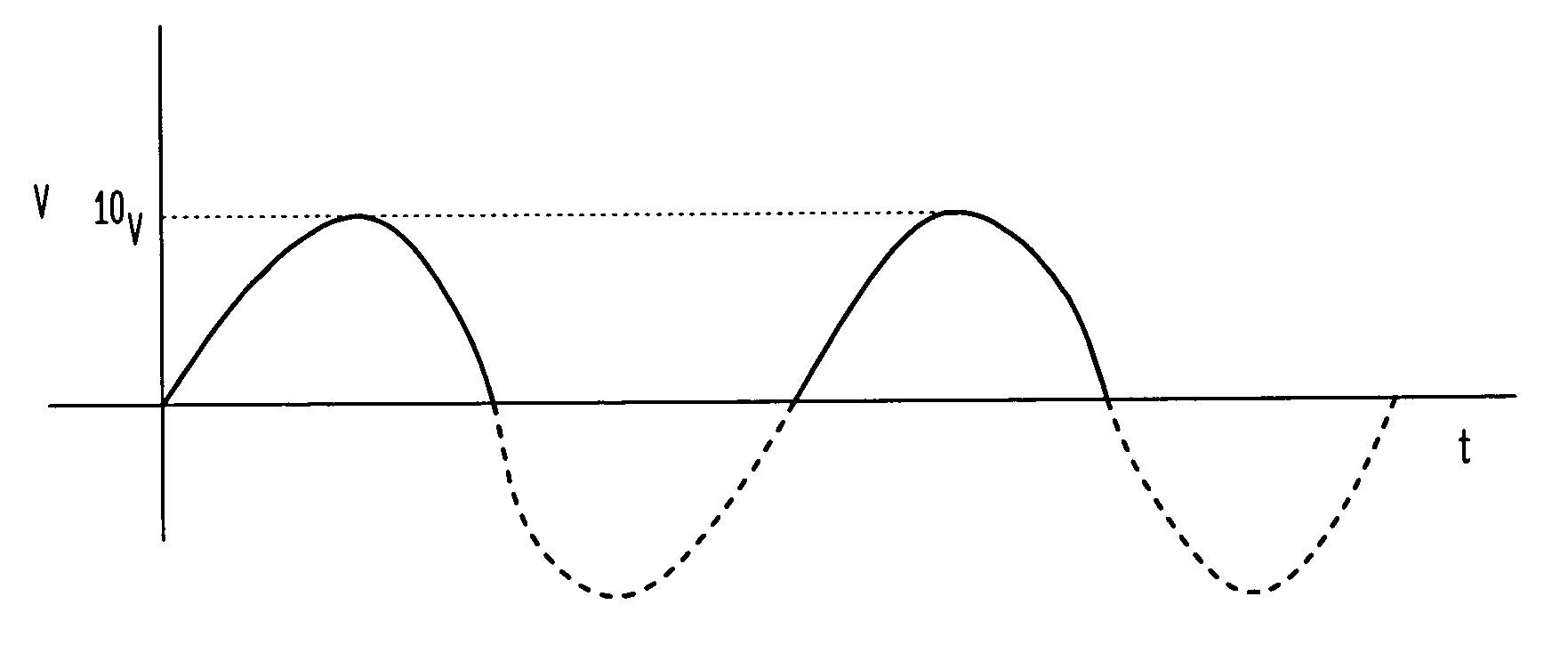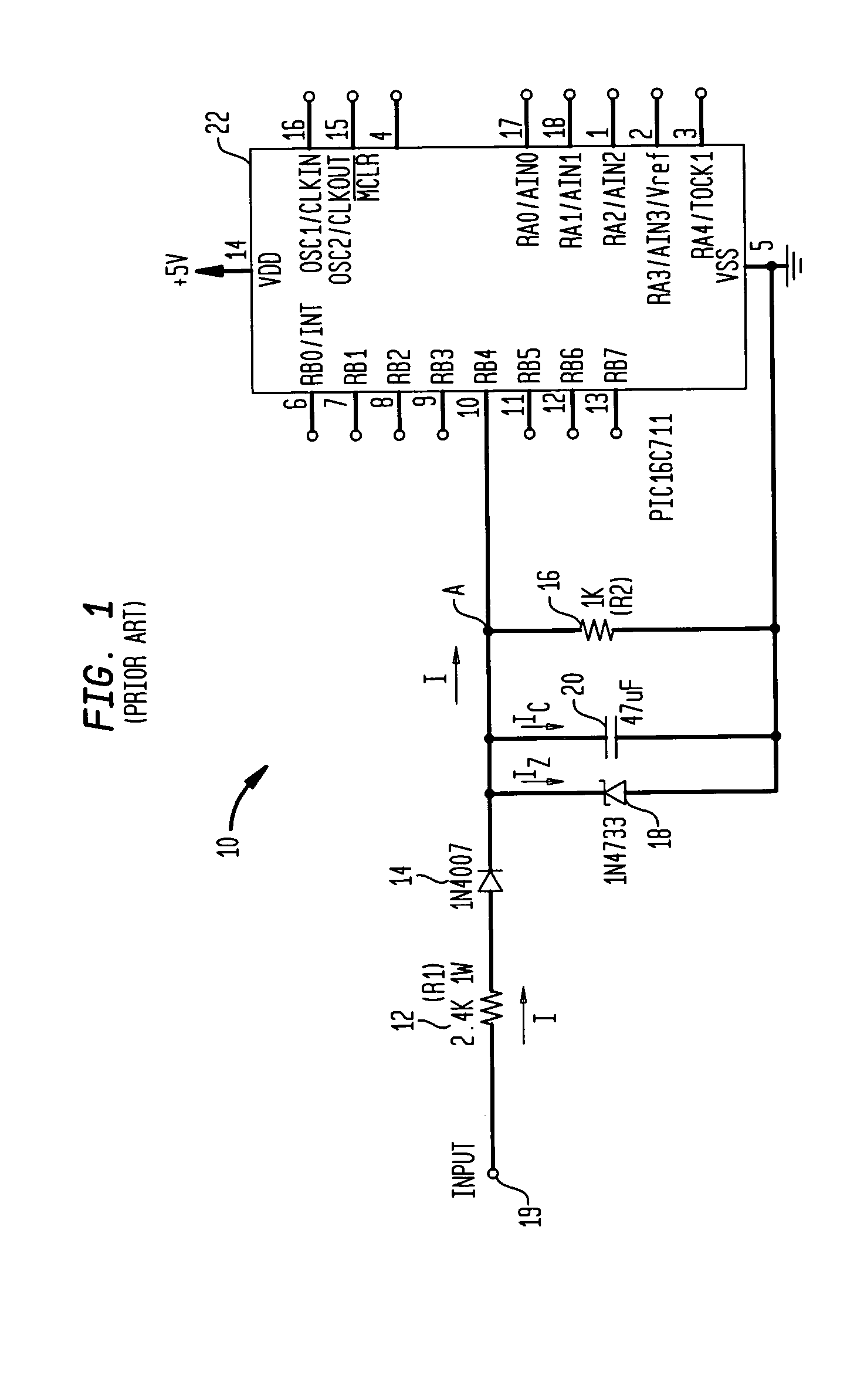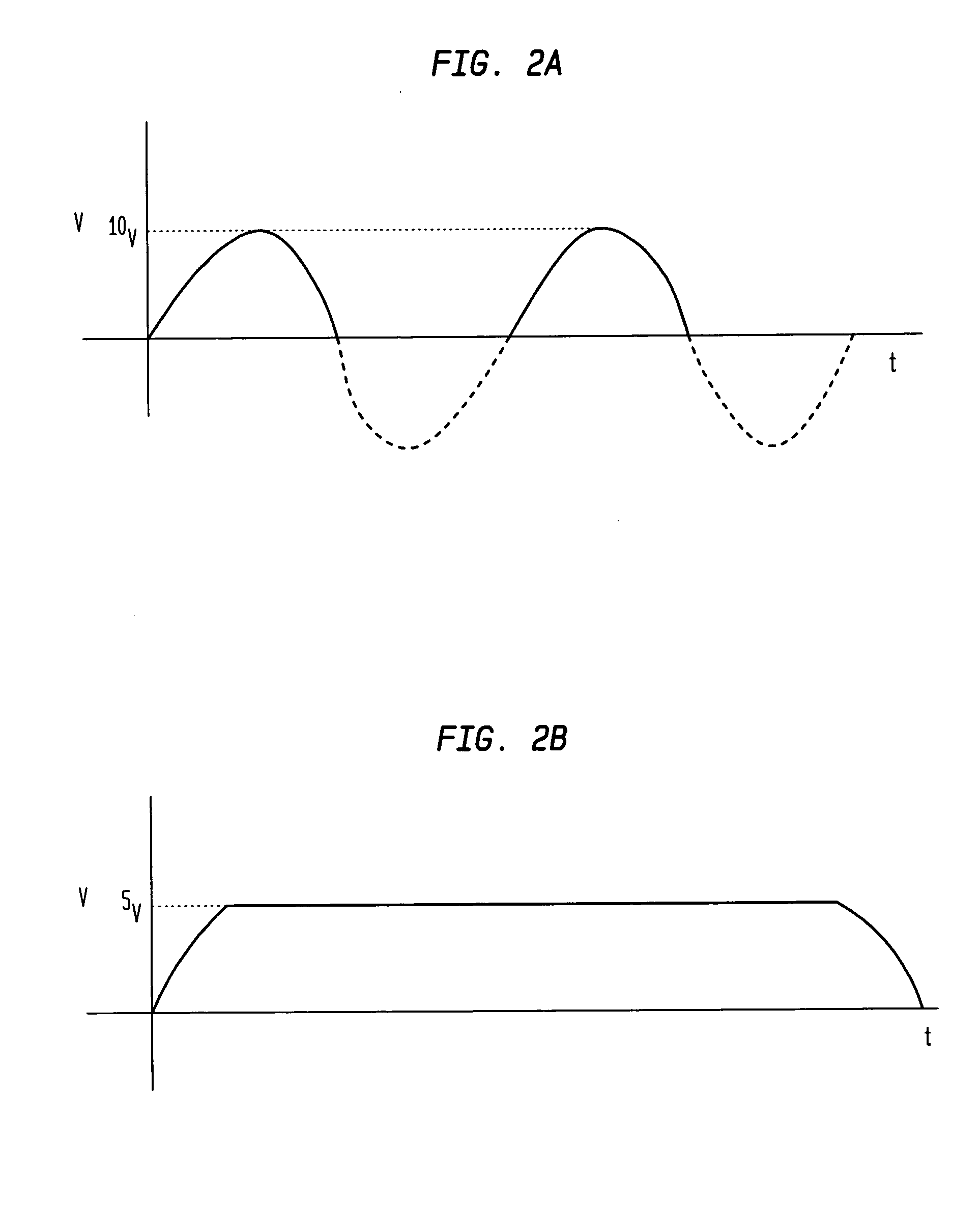Apparatus and method for detecting, filtering and conditioning AC voltage signals
a technology of electrical signals and filters, applied in lighting and heating apparatus, instruments, heating types, etc., can solve problems such as microprocessors or microcontrollers responding, ac voltage input signal detection interface circuits may be susceptible to errors in detecting ac voltages, and achieve the effect of minimizing microprocessor malfunction
- Summary
- Abstract
- Description
- Claims
- Application Information
AI Technical Summary
Benefits of technology
Problems solved by technology
Method used
Image
Examples
Embodiment Construction
[0041] Referring now to the drawings, wherein like numerals indicate like elements, there is shown in FIGS. 3A and 3B, an AC voltage signal detection interface circuit 100 in accordance with one or more aspects of the present invention. The interface circuit 100 includes a plurality of electromechanical or electronic temperature control thermostats 102 represented by switches having contacts C1, C2 and powered by, in this example, 24 VAC. The 24 VAC is outputted from a step down transformer 104, which is coupled to a residential or commercial regulated power source (not shown) such as an outlet receptacle (not shown) providing 220 or 110 VAC RMS. That is, the 24 VAC transformer can be powered by 110 VAC or 220 VAC or any other possible line voltages. It is not important as to the source of power, except to the extent that the microcontroller circuit receives 24 VAC. Although FIGS. 3A and 3B depict thermostats as the external controllers, it should be understood by one of ordinary sk...
PUM
 Login to View More
Login to View More Abstract
Description
Claims
Application Information
 Login to View More
Login to View More - R&D
- Intellectual Property
- Life Sciences
- Materials
- Tech Scout
- Unparalleled Data Quality
- Higher Quality Content
- 60% Fewer Hallucinations
Browse by: Latest US Patents, China's latest patents, Technical Efficacy Thesaurus, Application Domain, Technology Topic, Popular Technical Reports.
© 2025 PatSnap. All rights reserved.Legal|Privacy policy|Modern Slavery Act Transparency Statement|Sitemap|About US| Contact US: help@patsnap.com



